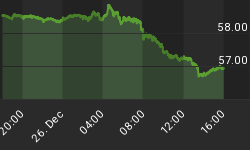The escalating negative dynamics surrounding GBP are giving FX traders a new means of going "long USD", as excessive shorts in EUR risk a short squeeze in light of possible "Greece breakthrough" of German banks purchasing Greek bonds. And so rather than getting caught wrong-footed in opening new shorts in EUR, FX markets face fresh pretexts for sending GBP back towards last year's lows. Unlike EUR, GBP has no supportive dynamics such as German bond purchases, or a "too big to fail currency". Instead, GBP faces the risk of a double dip recession and a Bank of England on the precipice of new round of asset purchases.
The chart below shows that net shorts in GBPUSD last week reached 62,884 contracts, the second worst net short position after the 65,346 contracts reached in the week of October 13, 2009. The fact that GBP shorts are a mere about 2400 contracts away from their lows; and GBPUSD stands 10% above its 24-year lows of $1.35 attained 14 months ago highlights the downside potential for the currenc especially against the rising USD, whose central bank is closer to ending its own version of quantitative easing "MBS Agency purchases".

GBPUSD breaches through the $1.48 figure alerted in our Friday note "Sterling Free Fall & Gilt Signals", after cascading through a series of stops onto the 10-month low of $1.4784. Aside from the usual suspects (expected QE by BoE, political uncertainty and debt concerns), the probability of a double-dip recession looms large, especially considering that the downward revision in Q3 GDP (to -0.3% from -0.2%) was the main reason Q4 produced an increase. Eroding profits at HSBC and deepening losses at Lloyds should also be among the drivers prompting traders to use the GBP as the new path of least resistance of opening long-USD positions, instead of the EUR, which had been recently supported by speculation of a German-Greece deal. While we continue to deem the recent rebound in EUR as a temporary retracement before renewed erosion towards $1.32; 0.922 (vs. GBP) and 1.4550 (vs. CHF); the accelerating losses in GBP face no immediate floor until $1.4590 and $1.4334 (76% retracement of the rally from the $1.35 low to the $1.7006 high.
















